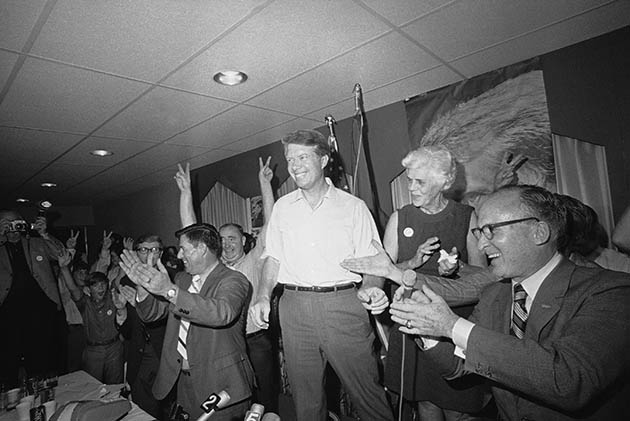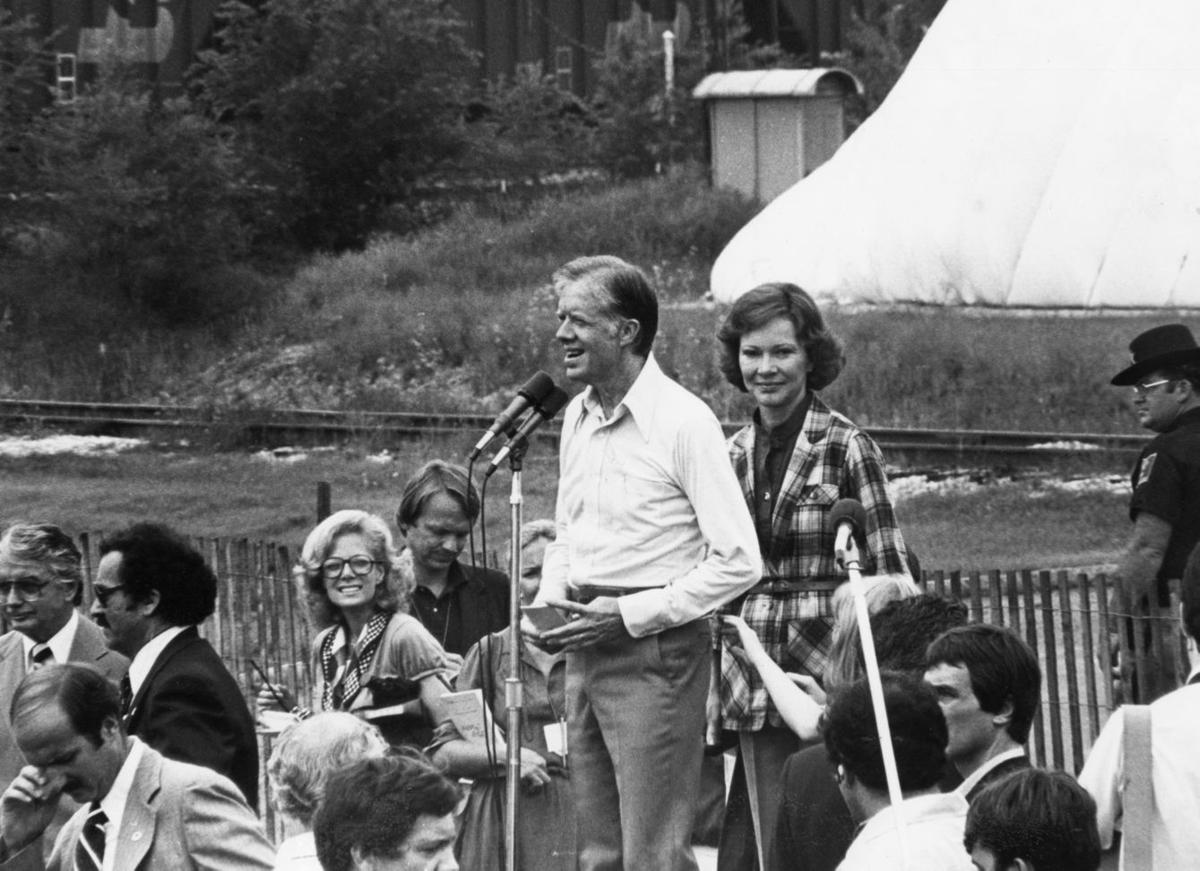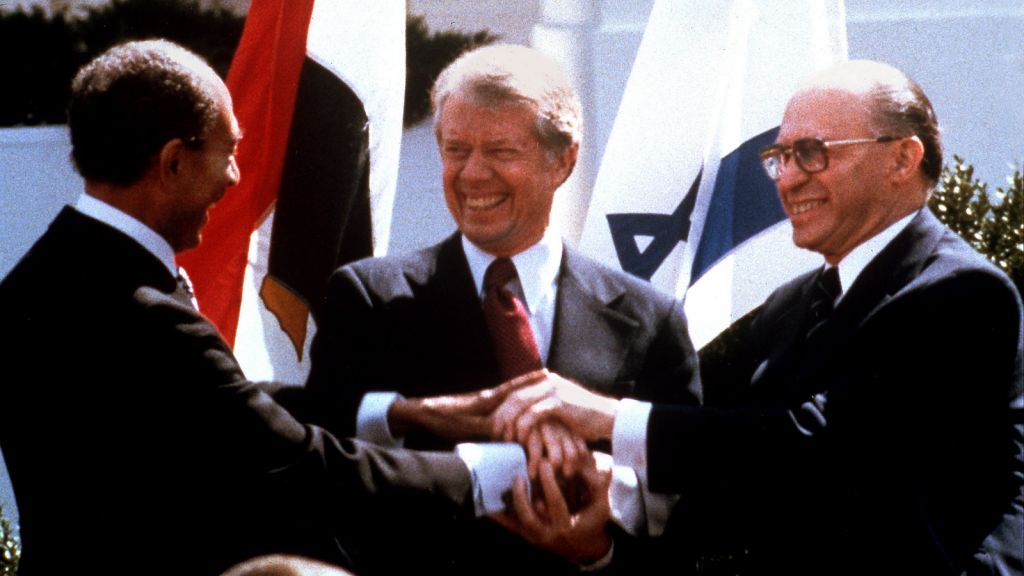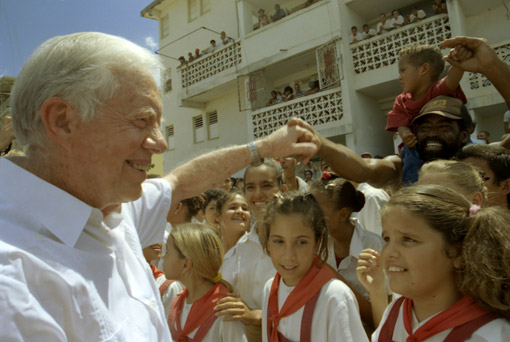James Earl Carter Jr., commonly known as Jimmy Carter, was inaugurated as the thirty-ninth President of the United States on January 20, 1977. The former governor of Georgia had run a ‘different’ political campaign against the incumbent President, Gerald Ford, in the year prior and was elected by the people in a landslide victory. Carter was young and had no close ties with his own party, the Democrats, meaning that he appealed to first-time voters and independents. Moreover, his previous political shake-up in Georgia and willingness to be stubborn when making unpopular decisions contributed to his image of an ‘outsider’ who was ready to change the grim mood of the nation’s capital. Carter’s win gave many hope after a long string of unfortunate political mishaps that involved racism in the South, student protests in the West, the continuous (never-ending) Vietnam War, and the sudden resignation of former President Richard Nixon. And as he had run a campaign that did not align with Washington politics, Carter found it suitable to parade in a different way on inauguration day. And on the ceremonial drive from the Capital to the White House on that brisk January day, Carter surprised his Secret Service detail and proceeded to step out of the presidential car and walk. Scholar Julian E. Zelizer noted Carter’s unwavering commitment to face his opposition: “He thought of the angry demonstrators who had habitually confronted recent presidents and vice-presidents, furious over the Vietnam War and later the revelations of Watergate” (p. 1). However, Carter persistently ignored the dangerous threats and walked among the people, supporters and the opposition—this was a clear sign to the nation and the world suggesting that he was the people’s president, and did not wish to stand apart from the citizens and electorate who had elected him to the most powerful executive position on Earth.
Jimmy Carter was different from previous presidents and candidates in style and personality. First and foremost, he was an incredibly smart man—as an engaging subject that could attract anyone, Carter had the ability to smile in any situation, good or bad. Additionally, Carter had shown during his stint as the governor of Georgia (1971-1975) that he had the potential to compromise—he was bipartisan and did not allow himself to become tied to one specific political party. Furthermore, Jimmy Carter was a politician who was willing to evolve and question his own assumptions. With his applied background in engineering (he attended Georgia’s Southwestern Junior College as a student) and as a problem solver, Carter adjusted his political and social views when realities changed. These unusual traits made Carter a very attractive candidate for the presidency during a time when a majority of the nation was tired of the greediness and corruption of Washington D.C. As an ‘outsider,’ a label that he quite admired, Carter demonstrated a sense of what Americans needed and wanted, including a desire for anti-establishment politics, a moral framework, increase in human rights, and a restoration of America’s foreign image (the student riots and violence among communities during the Vietnam War had significantly tarnished America’s ‘peaceful and powerful’ image in the world). Many, whites and Hispanics and African-Americans, believed that the former state governor was the man who could (and would) shake up the nation’s political institutions, and named him the face of the ‘New South,’ a politician who would radiate and hear the pleas of the common man while giving a voice to the forgotten, increasingly-urban, radically-tolerant civilians in the South.
Carter’s 1976 presidential campaign took expansive steps to promote his image as an outsider. At campaign events, Carter would always acknowledge his status as a different, untied politician who would be responsible for his actions in his speeches (a trait that was rarely exhibited by politicians in office): “If I ever let you down in my actions, I want you to let me know about it and I’ll correct it. I promise never to betray your confidence in me” (p. 19). Carter would hold huge campaign rallies to drum up support in his presidential campaign, but also favored smaller gatherings, like town-hall meetings, where he was able to confront his supporters and the opposition face-to-face with sincere questions. His campaign team emphasized that fact that the former governor represented the common man and woman, and praised the candidate’s ability to host successful small gatherings (in his run-up to the governorship, Carter would host small barbecue parties in his back-yard in order to gather support). Furthermore, Carter played a tactical approach with the press and media—when a reporter asked him whether he was liberal, conservative, or moderate, Carter quipped “I am a more complicated person than that.” At the Democratic National Convention in 1976, Carter turned to the press pool after his nomination announcement, and donning his trademark rough-and-tear blue jeans and jean jacket, he joked that he was “still the underdog fighting the establishment” (p. 44). Furthermore, Carter used his own story to great effect on the campaign trail to emphasize his humble beginnings and a symbol of the American dream (similar to the stories of Abraham Lincoln and William Henry Harrison). His first autobiography was released in 1966 and told stories of his origins and progressive parents in the small town of Plains, Georgia, his orderly childhood and ambitions to succeed and continuously work hard, and his brave naval career. One Republican congressman noted that Carter was “playing upon two essentially conflicting myths— ‘the good ole’ boy’ from the rural South and the ‘black and white together’ from the new South” (p. 38). Carter’s portrayal as a different politician won the leader the election. However, as time would tell, being an ‘outsider’ would be both a blessing and a curse.
Jimmy Carter took office during a tumultuous time in American history. Since the Watergate Scandal, Nixon’s resignation, and Ford’s controversial pardon of his predecessor, the American public had lost faith in their government and president. To combat this loss of hope, Carter used the newly-elected Democratic legislature to his advantage. His first two years in office are considered a success in modern presidencies—Carter and his party made many regulatory changes to clean up the government corruption; the President undertook many foreign trips and welcomed several world leaders to the White House as he tried to make an effort to improve America’s depleting foreign relationships (including the famous Camp David Peace Accords between Egypt and Israel); and he signed the Panama Canal Treaties in 1978, promising to give the U.S. controlled water avenue back to the Panamanians by 1999. By the end of his first year in office, Carter’s approval rating was at 69%– much higher than Ronald Reagan’s or Barack Obama’s during this same time period. Carter’s foreign policy agenda succeeded expectations, however his domestic agenda was non-existent. The second-half of Carter’s presidential term was marred by a crumbling economy, skyrocketing oil prices, and deteriorating relationships with the Soviet Union (the USSR invaded Afghanistan in 1979, prompting the United States to boycott the Moscow Summer Olympics in 1980). Moreover, Carter’s legacy was threatened by a tense hostage situation in Iran. These faults contributed to Carter’s defeat and Ronald Reagan’s victory in the 1980 presidential election.
Though Carter’s legacy has been smeared by the late 1970s crumbling economy and a gradual decline of the Democratic Party, his presidency sparked America’s renewed interest in foreign relations. Not only did Jimmy Carter improve America’s crippling image on the world stage, he was one of the first modern presidents who was not afraid to shake up Washington politics and listen to the people—thus, today he is considered a champion of the electorate. Since he left office, Carter is still a leader among the people, mingling among book clubs (as he is the author of over twenty books), volunteering with relief organizations during natural disasters, and publicly speaking to large audiences concerning hope, faith, and democracy. The former president was awarded the coveted Nobel Peace Prize in 2002 “for his decades of untiring effort to find peaceful solutions to international conflicts, to advance democracy and human rights, and to promote economic and social development.” He has had one of the most active post-presidential careers in American history. In examining the paramount points of presidents’ legacies, Carter, in my history book, will always be memorialized for his exceptional foreign policy agenda and harmonious outreach with the American public.
For more information regarding Jimmy Carter: Julian E. Zelizer, Jimmy Carter (New York: Times Books, 2010).

Jimmy Carter, relaxed and happy, 1980 presidential campaign. Photograph from ABC News.

Carter naturally preferred smaller gatherings, where he could face his supporters and opposition face-to-face, on the 1980 campaign trail. Photograph from AgUpdate.

One of his crowning moments of success in office: Peace between Israel and Egypt. Photograph from The Times of Israel.

Though retired, Jimmy Carter continues to volunteer with many charities and non-profit organizations around the world. His dedication to humanity led him to be awarded with the Noble Peace Prize in 2002. Photograph from The Carter Center.
*This blog is a re-post from my old website. I have recently taken a sincere interest in the history of the U.S. Presidents, and have long admired Jimmy Carter (he recently sent me a congratulatory letter when I married my wife). His genuine and friendly character reminds us that not all politicians lie nor are fueled by self-interests.



No comments:
Post a Comment